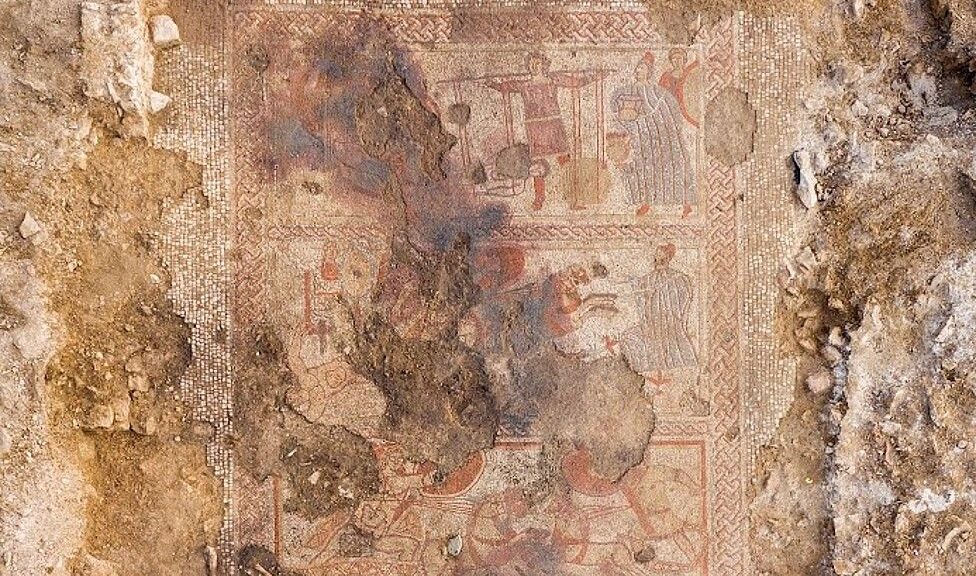Large Roman Villa Site in England Surveyed
The scale of a sprawling villa that housed one of the most important mosaics found in Britain in decades has been revealed. The Rutland mosaic was made public in November – but the size of the complex around it was only hinted at.

Now ground-penetrating surveys have shown an area as large as five football pitches, boasting possible formal gardens, a bathhouse and a mausoleum.
Survey lead Dr John Gater said it was the largest site his team had covered.

The mosaic was described by Historic England as “one of the most remarkable and significant… ever found in Britain” and by TV presenter and academic Professor Alice Roberts as “important and exceptional“.
Rather than standard scenes of hunting or mythology, its panels illustrated an unusual version of a scene from the Trojan war, where the warrior Achilles ransoms the body of fallen enemy Hector.
Dated to the 3rd and 4th Century AD, the 11m x 7m (36ft x 23ft) floor, while impressive, was only one time period in, and one part of, the villa.
But for security reasons, its full size and complexity were kept under wraps, except for an admission less than 3% of the site had been excavated.

Now a geophysical survey of the area has been released, showing a complex of structures worthy of such a centrepiece.
One set of scans, which uses magnetic variations, showed the 5-hectare site was surrounded by ditches.
Dr John Gater, of SUMO Geophysics Ltd, said: “This is the largest site we have worked on and on a par with the largest villas in the Cotswolds.
“The ditches could date from the Iron Age, with the villa occupying an already defended area, or they could be Roman, marking the villa.”

But what is inside the huge ditches, shown by the ground-penetrating radar, is remarkable.
Dr Gater said: “To find a mosaic is exciting but to find the whole complex it is part of is really impressive.
“And for me the clarity of the surveys is incredible – you can see not just walls but individual pits and wells.”

While definitive answers will have to wait for archaeologists, the pattern of buildings already found is highly suggestive.
“It looks like a large number of villa buildings, along with a probable bathhouse and perhaps even mausolea and a chapel,” said Dr Gater.
“There is also an aisled building which might be Anglo-Saxon, perhaps showing the use of the site continued after the Romans.”
Excavation work, led by the University of Leicester and funded by Historic England, is due to resume later this year.
